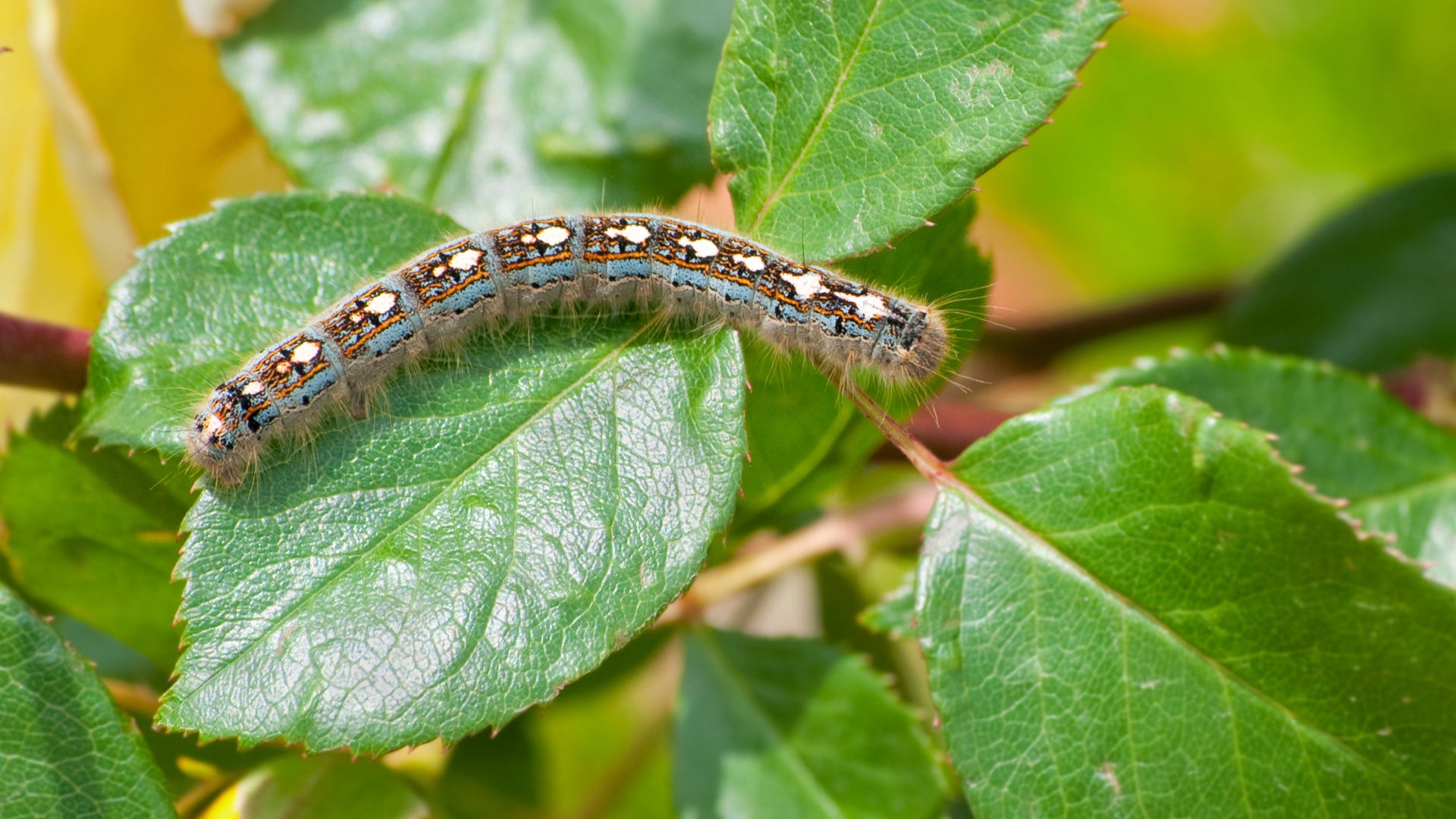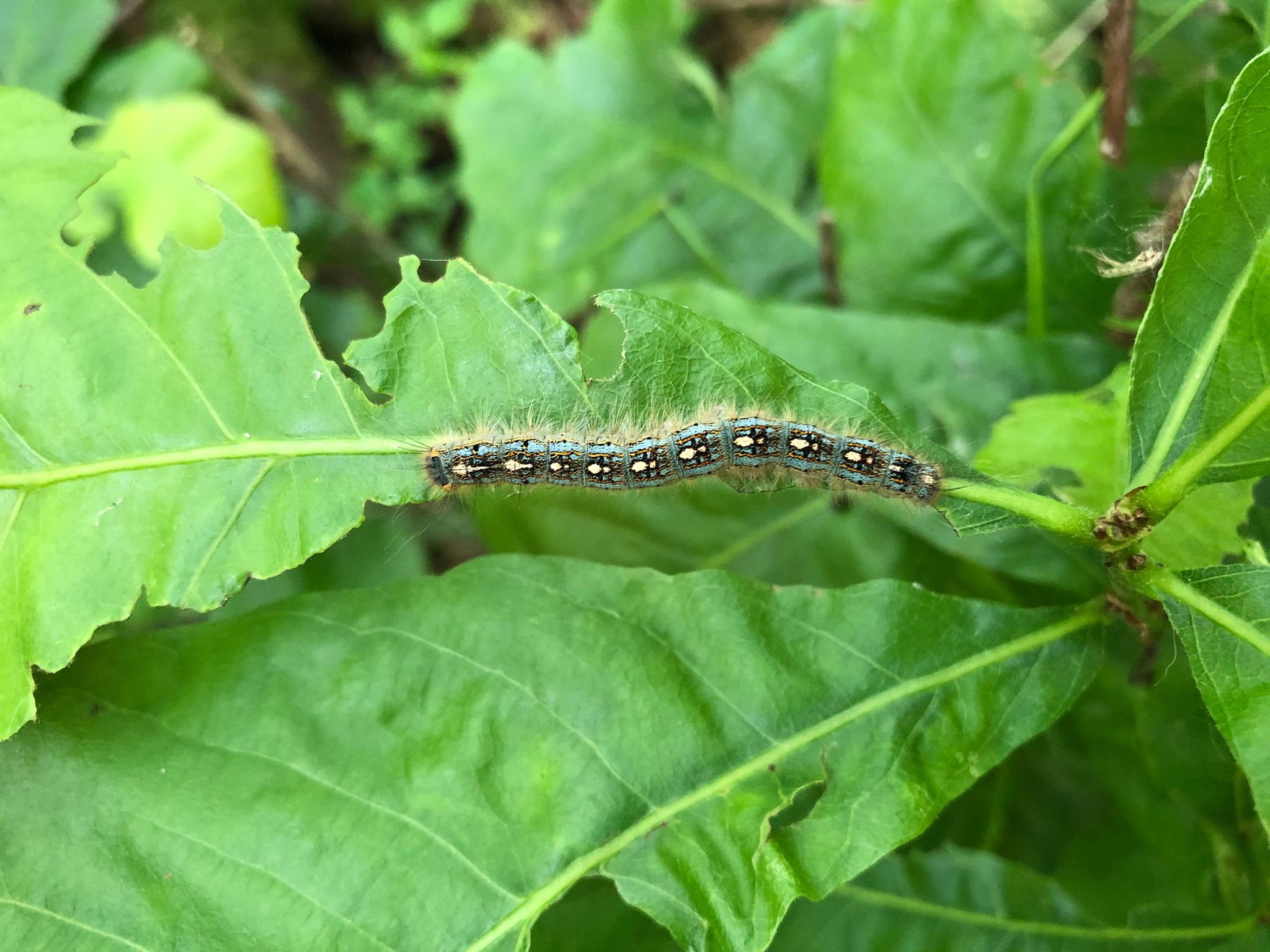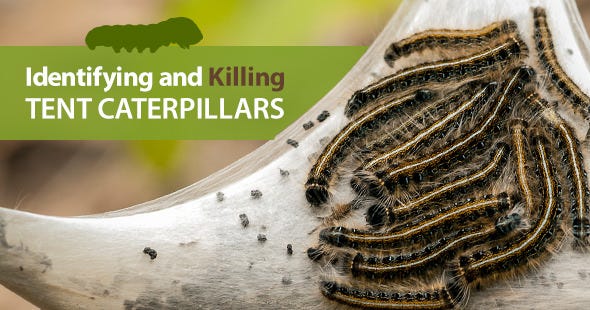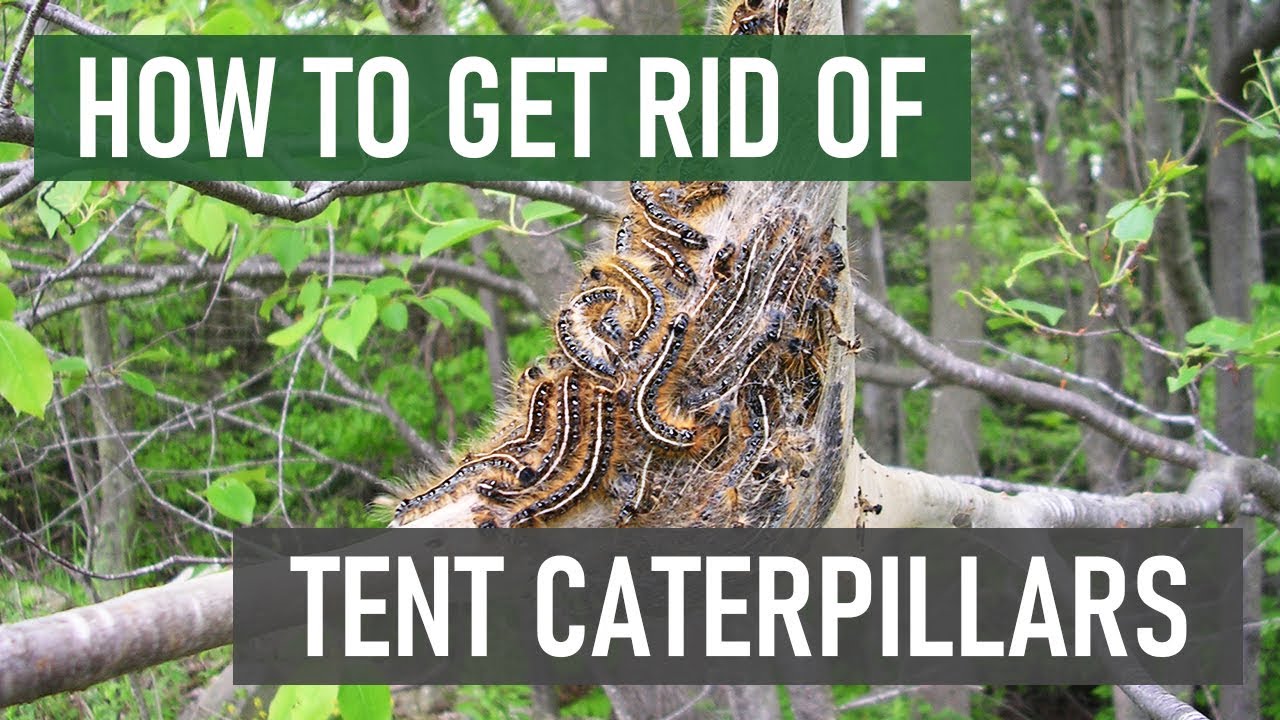The best insecticide for tent caterpillars is Bt (Bacillus thuringiensis). This biological pesticide targets larval stages without harming beneficial insects.
Tent caterpillars can cause significant damage to trees, particularly in the spring when they form their characteristic web-like tents in branches. Gardeners and homeowners seek effective solutions to control these pests before they defoliate foliage and compromise tree health. Bt, a naturally occurring bacterium found in soil, offers a targeted approach.
It’s safe for the environment, pets, and humans, making it a preferred choice for managing tent caterpillar infestations. Users should apply Bt at the first sign of tent caterpillar webs for optimal results. With careful application, Bt insecticide helps protect trees and maintains the balance of the surrounding ecosystem.

Credit: www.saferbrand.com
Combatting Tent Caterpillar Infestations
Combatting Tent Caterpillar Infestations is vital for gardeners and homeowners alike. These pests can strip trees of their foliage, causing significant damage. Understanding their lifecycle and signs of an infestation is key to control and prevent damage effectively.
Life Cycle And Habits Of Tent Caterpillars
Tent caterpillars have a distinct life cycle. Recognizing each stage can aid in timing your intervention for maximum impact. In spring, eggs hatch and larvae begin to form communal nests. These caterpillars feed on leaves, causing defoliation. By early summer, they cocoon, emerging as moths ready to lay eggs for the next generation.
- Spring: Eggs hatch; larvae feed and grow.
- Early Summer: Cocooning and moth transformation.
- Late Summer: Moths lay eggs for the following year.
Identifying The Signs Of An Infestation
Spotting an infestation early is critical. Look for silky tents in the forks of branches. Chewed leaves and defoliation are telltale signs. You might also see caterpillars on the move or accumulating around the nest. Quick identification leads to more effective treatment.
| Sign | Details |
|---|---|
| Silky Tents | Usually found in branch forks. |
| Chewed Leaves | Noticeable bite marks or missing foliage. |
| Visible Caterpillars | Frequently seen near infested areas. |
To combat these pests, act promptly when you detect their presence. Employ the best insecticide for this purpose to ensure your trees remain healthy and beautiful.
Chemical Insecticides: Pros And Cons
When combatting tent caterpillars, chemical insecticides are a common choice. They offer a fast-acting solution to protect trees and shrubs. Yet, the use of chemicals brings both benefits and challenges. Let’s dive into the pros and cons.
Effectiveness Of Chemical Solutions
Chemical insecticides are known for their quick results. They often provide a straightforward approach to exterminating tent caterpillars. Many products on the market guarantee the elimination of infestations when applied correctly. The following points highlight their effectiveness:
- Fast action: Chemicals work quickly to reduce caterpillar numbers.
- Targeted approach: Certain insecticides are designed to target tent caterpillars specifically, minimizing harm to other species.
- Long-lasting effects: Some formulations offer residual action, keeping areas caterpillar-free for longer.
Potential Environmental Impact
Despite their effectiveness, chemical insecticides come with a Potential Environmental Impact concern. The ingredients in these solutions can affect more than just the target pest. The environmental considerations include:
| Environmental Aspect | Impact |
|---|---|
| Wildlife | Chemicals can harm beneficial insects, birds, and animals. |
| Water Systems | Insecticides may leach into soil, contaminating water sources. |
| Plant Life | Non-target plants can experience adverse effects. |
| Human Health | Exposure may pose health risks to individuals applying the chemicals. |
Careful consideration is vital when choosing chemical insecticides for tent caterpillars. Following the instructions and understanding the risks can help mitigate negative impacts.
Biological Alternatives: Safer Approaches
Fighting tent caterpillars can be tough.
Nature offers safer ways to control these pests.
Let’s explore some environment-friendly options below.
Bacillus Thuringiensis (bt) As A Natural Insecticide
Bacillus thuringiensis, or Bt, is a natural fighter against tent caterpillars.
It is a microbial insecticide from soil bacteria.
- It targets caterpillar’s stomachs after eating leaves sprayed with Bt.
- It won’t harm people, pets, or beneficial insects.
- Apply it when caterpillars are young for the best effect.
The Role Of Predatory Insects And Birds
Predatory insects and birds are natural predators of tent caterpillars.
They are essential allies in your garden.
| Predators | Role |
|---|---|
| Wasps | They lay eggs inside caterpillars. |
| Birds | Chickadees and nuthatches eat the caterpillars. |

Credit: dnr.wisconsin.gov
Mechanical And Cultural Control Methods
Tackling tent caterpillars doesn’t always require chemical warfare. Mechanical and cultural control methods can be equally effective. These hands-on and environmentally friendly techniques reduce caterpillar numbers and encourage a healthy garden.
Physical Removal Of Caterpillar Tents
Seeing a cluster of caterpillars in your trees? Don’t panic. Here’s a simple tip everyone can try:
- Grab a pole or stick.
- Twirl it inside the tent. It will gather caterpillars and silk.
- Dispose of them far from your trees.
This method works best in the morning or evening when caterpillars are inside their tents.
Pruning And Tree Health Management
Pruning is not just about looks; it’s essential for tree health too. Here’s the process:
- Look for the tents in early spring.
- Cut infested branches carefully.
- Destroy or dispose of these branches properly.
Keep trees strong by:
Watering, mulching, and fertilizing.
These steps help trees resist pests naturally.
Choosing The Right Insecticide For Your Trees
When battling tent caterpillars, selecting an effective insecticide is crucial. These pests can defoliate trees quickly, so acting fast and wisely is key. Understanding which insecticide works best for your situation ensures healthy trees and a pest-free yard.
Assessing The Severity Of Tent Caterpillar Populations
Before deciding on an insecticide, take stock of the caterpillar situation. Look for silky tents in tree branches. Note the number of tents and caterpillars you see. A light infestation might need a different approach than a heavy one.
- Small populations might be controlled physically by removing tents by hand.
- Large infestations often require chemical treatments.
Matching Insecticides To Tree Species And Size
Different trees may respond uniquely to insecticides. Check the label for compatibility with your tree species. The size of the tree also impacts the product choice.
| Tree Size | Insecticide Type | Method of Application |
|---|---|---|
| Small to Medium | Sprays | Handheld or backpack sprayer |
| Large Trees | Systemic treatments | Soil application or trunk injection |
For smaller trees, foliar sprays can reach the tents effectively. On the other hand, larger trees benefit from systemic treatments, which protect them throughout the season.
Application Tips And Safety Measures
Controlling tent caterpillars is key to protecting trees and gardens. Proper application and safety are vital. Use these tips for safe, effective treatment.
Best Practices For Insecticide Application
Timing is crucial. Apply in the early caterpillar stages.
Read labels carefully before using insecticides. Always follow the manufacturer’s guidelines.
- Cover all foliage where caterpillars feed.
- Avoid windy days to prevent drift.
- Use recommended doses. More is not always better.
Repeat treatments may be necessary. Check the product’s instructions for details.
Personal Protective Equipment And Safety
Personal safety is essential. Always wear protective gear.
| Equipment | Reason |
|---|---|
| Gloves | Protect skin from chemicals |
| Mask | Avoid inhaling fumes |
| Goggles | Shield eyes from splashes |
- Always wash hands after application.
- Keep children and pets away until safe.
- Store insecticides out of reach.
Beyond Insecticides: Integrated Pest Management
Dealing with tent caterpillars can be a challenge. Insecticides may offer quick relief, but integrated pest management (IPM) takes various factors into account to maintain a long-term, sustainable solution. IPM is not just about killing pests. It’s about understanding their life cycle, monitoring their numbers, and choosing the right time to take action. It combines various methods for a healthier garden and environment.
Combining Methods For Long-term Control
IPM is a multi-faceted approach. It uses cultural, biological, mechanical, and chemical tactics to control tent caterpillars. The goal is to minimize harm to people, property, and the environment. Instead of relying solely on chemicals, try these methods for a balanced strategy:
- Biological control: Introduce natural predators like birds and beneficial insects.
- Manual methods: Remove caterpillar tents by hand or prune infested branches.
- Cultural practices: Choose resistant tree varieties or maintain tree health to ward off pests.
Monitoring And Thresholds For Treatment Decisions
Observing pest populations closely allows for timely intervention. Know when tent caterpillars hatch and monitor their growth. Here’s how to make informed decisions:
| Step | Action |
|---|---|
| 1. Identify | Look for tents in early spring. |
| 2. Inspect | Check for egg masses on branches. |
| 3. Monitor | Count the number of tents and caterpillars. |
| 4. Decide | Threshold reached? Consider your control options. |
Taking early action can often prevent the need for harsher chemicals later. IPM stresses the importance of treating infestations at the right time with the least disruptive methods.

Credit: www.saferbrand.com
Frequently Asked Questions Of Best Insecticide For Tent Caterpillars
What Insecticide Kills Tent Caterpillars?
Bacillus thuringiensis (Bt) is an effective, organic insecticide for killing tent caterpillars. Chemical options include insecticides with active ingredients such as carbaryl or permethrin.
What Gets Rid Of Tent Caterpillars?
To eliminate tent caterpillars, use manual removal, apply Bacillus thuringiensis (Bt) spray, or introduce natural predators like birds. Pruning affected branches also helps in control. For severe infestations, consider appropriate insecticides following label instructions.
Which Insecticide Is Most Effective Against Caterpillars?
Bacillus thuringiensis (Bt) is highly effective against caterpillars. It targets their digestive system without harming beneficial insects.
What Is The Systemic Treatment For Tent Caterpillars?
The systemic treatment for tent caterpillars includes applying Bacillus thuringiensis (Bt) or chemical insecticides to affected areas. Proper timing is critical to target the larvae effectively.
Conclusion
Selecting the ideal insecticide for tent caterpillars ensures your trees stay healthy and beautiful. Remember, effectiveness and eco-safety are key factors. For clear results, choose products with proven efficacy. Tackling infestations early preserves your garden’s charm. Act swiftly for the best outcomes and happy gardening!

I’m MD Tanvir, and I bring years of expertise gained from working closely with pest control companies to the forefront. My journey in the industry has inspired me to launch Bug Battler, a platform aimed at equipping people with the know-how to combat pests autonomously. Through Bug Battler, I aim to empower individuals with practical insights to tackle pest infestations effectively.

